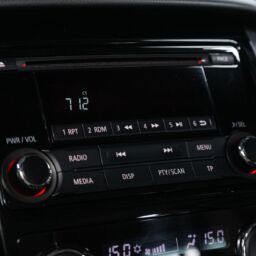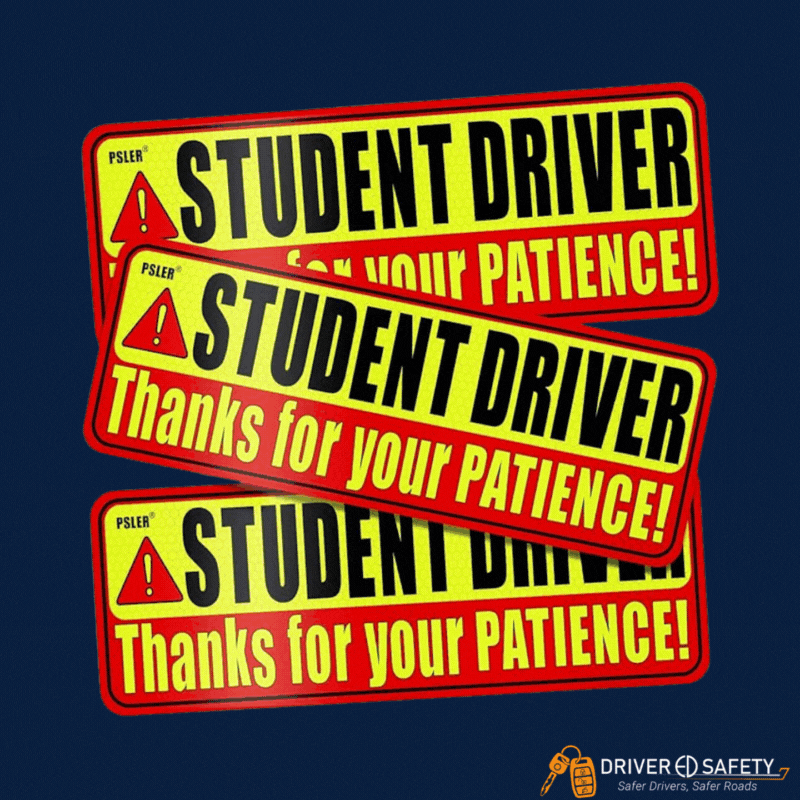
So, your student is ready to start driving! How exciting! But even with excellent driving courses, you will still need to practice driving with your student. For those of us who have been driving for years, it can be hard to remember what it was like when we were first learning—the overwhelming busy roads, confusing roundabouts, and inclement weather. It’s a lot to handle when you’re new to driving.
To help you practice driving with your student with ease, we put together some tips.
Before You Drive
Practicing driving should start before your student even puts the key in the ignition. It’s important to be prepared. Map out the drive route ahead of time. Be prepared with an alternate route in case of detours or other traffic problems. At the beginning of each drive, do a quick review of the last driving practice. Try to explain the route and what maneuvers you’ll be practicing: will you practice parallel parking? Pulling into a parking space?
Before your student begins driving practice with you, ensure that the vehicle is safe by checking the following:
Inside Vehicle Checks
- Lock doors
- Seat Belt
- Any warning lights displayed on the dash (after starting the car)
- Check horn
Outside Vehicle Checks
- Check for broken windows and mirrors
- Any leaks around the vehicle
- All lights, signals, brakes, and parking lights
How to Give Directions
Directions are the basis of how you’ll practice driving with your student. Give directions four to six seconds before the driving action, and always check mirrors before giving directions. Your student will take more time to process information than an experienced driver. Directions should be stated in two parts:
Start with where you want the action done, then say what you want the driver to do. Directions should begin with a prepositional phrase (you didn’t know you’d need grammar skills to teach driving, did you?). For example, “At the next stoplight…” or “Across the railroad tracks….”
Always keep in mind that your student is still learning. Don’t assume they know what you want them to do. Never give more than two directions at one time. Some student drivers may become confused with multiple directions. It’s best to break it down into segments throughout the drive and give one direction at a time.
Driving Lingo
“Do I turn left here?”
“Right.”
If you’ve ever been in a car when this happens, then you know how confusing it can be if you don’t give specific directions. Always use the word “correct” when you’re confirming your student’s questions.
Slang can be especially overwhelming for new drivers, such as “step on it.” Better to use precise language like “traffic signal” rather than “red light.”
A student first learning to drive can feel pretty nervous. The pressure may make them confused, even when determining left and right. When giving directions, use simple gestures to point in the direction you want the student to turn, slow down, or brake. You may even have to repeat directions.
When Your Student Makes a Driving Mistake
Try not only to identify mistakes your student made but also provide positive comments and explain how to correct the mistake. Allow your student to develop skills through their own practice and experience with guidance and feedback. Be aware of your student’s abilities, limitations, and frustrations. If they are frustrated or overloaded, opt out of the activity and come back to it later.
Give immediate feedback when a driving mistake occurs, but never use harsh or demeaning criticisms. Tell your students how to do it better next time and give them another opportunity as soon as possible. Ask non-judgmental questions about things that went wrong. for example, instead of asking, “Why did you drive so fast?” ask, “What things did you consider before deciding on this speed?”
If a lengthy discussion or explanation is needed, move to a safe place to stop and park the vehicle. Use a legal parking area or parking lot. Do not park or stand on the roadway shoulder or impede traffic flow.
Skills Needed in a Successful Driver
As you are practicing with your student, here is a list of skills to observe.
Practice makes perfect, so they say. The more practice you do with your student, the more likely they are to pass their driving test with flying colors!
Taking part in a driver education program will also help them prepare for their test. Learn more about our open enrollment Online Course or Behind the Wheel Lessons.






